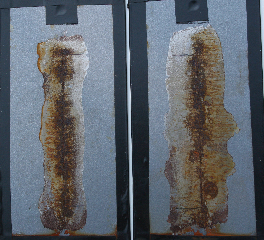
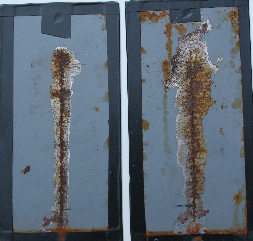
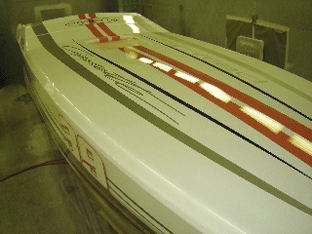
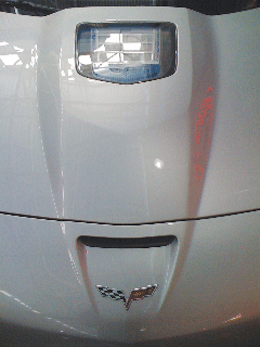
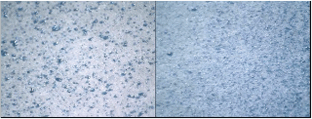
The coatings process may occur at any step during the manufacture of the world’s products right up to final assembly. The finished product—from simple garden tools to high-end automobiles to jumbo jets—enjoys the same two principle benefits: creating aesthetic appeal and providing a protective barrier.
For obvious reasons, many manufacturers spend a good deal of time and resources to make their products look good and wear well. Advanced Coating & Application Technologies®brings them toward that end.
In a highly competitive world economy, every step of the coatings process is pivotal to the value of manufactured products. Protecting substrates from simple atmospheric oxidation to harsh operating conditions makes the coating process a critical component in the overall manufacturing process. Regrettably, even the most sophisticated paint products are wholly undermined through poor application. Because this step qualitatively determines a good portion of a product’s value, the coating process demands ongoing examination if standards are to be elevated to optimum levels.
Compressed air has been the standard fluid carrier, but as a fluid vehicle it is fundamentally flawed. The major flaws inherent in compressed air’s uncontrolled variables are heat, moisture content [humidity], and static electricity.
Heat. High temperatures change the volume of air molecules altering paint density in the fluid carrier. This, in turn, distorts color, necessitates changes in air pressure, and alters chemical reaction rates, especially solvent evaporation and dry times. Moisture initiates and accelerates several coating problems; it alters paint’s electrostatic charging efficiency, leaves imperfections on the substrate, causes film defects—such as blistering—and is a primary factor of corrosion.
During spray application, undesirable static electricity is generated by compressed air because of the friction-intensive route it must undertake to reach the nozzle before application. A net negative charge is present in the compressed air and the fluid, causing them to repel each other. The target substrate also retains a negative charge due to preparation: sanding, polishing, tacking, etc. Additionally, plastic and composite materials have a natural negative charge that is difficult to neutralize. Because these items carry like charges, they repel each other—clearly undesirable for a process reliant upon the adhesion of one substance to another. The confluence of negative charges also causes the attraction of contaminants such as dirt, dust and fibers to the freshly painted substrate from more than 3 ft. away.
Static electricity is also a factor in film defects, as it causes metallic particles and color pigments to change position, creating issues such as inconsistent color and coverage. In addition, negatively charged overspray precipitates dry spray particulate deposition and contamination. These intrinsic conditions have challenged the arts and sciences of the coatings industry since paint was first atomized. Only until recently, the laws of physics and forces of nature governed process and randomized outcome without disturbance by human intervention. Advanced Coating & Application Technologies® harnesses the laws of physics and forces of nature to minimize variables, control process and predict outcome.BEHIND THE PROCESS Advanced Coating & Application Technology® is a radically innovative and proprietary technology that eliminates every shortcoming of compressed atmospheric air. Advanced Coating & Application Technologies® offers full control over the three principal problem-causing variables: heat, moisture/humidity, and electrostatic charge.
Heat is controlled and remains constant, allowing for predictable and reproducible results. As viscosity is largely dependent upon heat, control of heat obviates the necessity of solvents to manipulate viscosity.
Moisture is completely removed by bringing the fluid carrier temperature down to anhydrous levels (-50°C); this eliminates all traces of water and the cascade of defects caused by moisture.
Interestingly, Advanced Coating & Application Technologies® actually utilizes static electricity by positively charging the fluid carrier; the negatively charged target substrate then attracts the positively charged fluid carrier. This ensures better coverage, higher transfer efficiency, enhanced adhesion, and less overspray. Plus, it eliminates the previously mentioned application defects associated with uncontrolled static charges. The reduction of uncontrolled static charge also increases particle stabilization, thereby reducing color defects.
A fourth attribute of this technology is complete control of fluid carrier composition, meaning that the gases composing the fluid carrier are completely controlled through discreet gas separation. Every time a user applies a coating, it will be applied with an identical fluid carrier because the gases and proportional content of the gases are constant providing absolute control and less uncertainty to every paint job.
The gases implemented in the fluid carrier also contain the most desirable qualities for coating application.
The validity of any new technology is substantiated and strengthened through objective, concrete evidence and repeatable, experimental success. Photographic evidence is presented to demonstrate the validity of this technology. Because of the control Advanced Coating & Application Technologies® offers, especially in regards to consistency in fluid carrier composition, atomization is more complete and particle size is greatly reduced and much more uniform than the particle size produced by compressed atmospheric air.
Particle size is a critical factor, as it affects many attributes of the painting process, including film appearance and flocculation. Reduced particle size also eliminates many coating film defects and increases dispersion stability. This premise sets the foundation for the technology’s success in decreasing film defects consistently in all trials encountered.
Aside from eliminating film defects, it has been proven that Advanced Coating & Application Technologies® provides significant savings to the user in both labor and materials. Repeated testing reveals the technology saves 20–30% materials and 30–50% in labor. The labor and material savings are realized through the elimination of multiple applications due to greater coverage in a single pass. Users enjoy faster dry times and greater transfer efficiency. Advanced Coating & Application Technologies® significantly reduces the need for rework caused by film defects. The savings realized do not compromise the quality of the finish; rather, they produce a finish of greater quality, using less time, material and labor.
Environmental impact is substantially reduced by virtue of reduced material consumption. Users enjoy a 20–30% material savings that results in a 20–30% reduction in VOC emissions. If that is not enough, users and the environment enjoy a 50–100% reduction in harmful solvents needed for viscosity change.
The 30–50% labor/time reduction means that the energy required to run a spray booth is lowered by 30–50%, thereby reducing costs and diminishing environmental impact.
Lastly, in regards to environmental influence, the increased transfer efficiency reduces number of filter change-outs, booth maintenance, shoot suits, and tear-away masks, while also providing a much greener work environment. With increasingly stringent laws and guidelines regarding the environment, every opportunity should be engaged to remain ahead of the ever-progressing “green” curve.
Without protective coatings, bare surfaces weaken and corrode long before their usual life expectancy. Still, corrosion is a constant factor despite the quality of the coatings themselves because traditional compressed air application has remained largely unchanged. As previously depicted by the micro-photographic pictures, Advanced Coating & Application Technologies® produces greater coverage through a much more uniform surface deposition, rendering a denser and more consistent barrier against corrosion than conventional compressed air.
The ability to fully cover and adhere to the target substrate is the determinate factor by greatly reducing microscopic voids and failure to adhere. Voids are the root cause of corrosion; this is where water, oxygen, and other contaminants contact bare metal and initiate the corrosion process. Advanced Coating & Application Technologies® substantially increases coverage of the target substrate and increases adhesion because of its proprietary control of the fluid carrier. Furthermore, despite the greater coverage, equal or less material is consumed because of greater transfer efficiency. Another aspect contributing toward corrosion protection is the fluid carrier is anhydrous and electrostatic polarity is controlled. Consequently, surface moisture and charged contaminants normally attracted to the charged coating are eliminated, thereby removing potential corrosion-inducing agents.
Preliminary testing has been undertaken to validate definitely the technology’s corrosion-diminishing potential. The testing indicated that the technology’s ability to outperform conventional compressed remained true in the realm of corrosion resistance. The testing was a comparative study of compressed air vs. Advanced Coating & Application Technologies®. Even in the earliest stages of corrosion, a significant difference was evident between the two, favoring the latter.
The continuous success of Advanced Coating & Application Technologies® has not gone unnoticed. Leaders in aviation, automotive, marine, woodcraft general manufacturing, and defense have adopted Advanced Coating & Application Technologies® because they comprehend both the near- and long-term value, as they continue to reap its benefits today.1 This technology is applicable to nearly every product requiring a coating. Currently, Advanced Coating & Application Technology® is used to coat a great variety of products from golf balls to jumbo jets. Every spray method except for airless application can be equipped with Advanced Coating & Application Technologies®.
Corrosion and other qualitative and quantitative manufacturing challenges impose a pressing demand on industrialized society as a whole. Improved coating methods that add life and beauty to products exert a tangible impact throughout the economic cascade. For instance: a better painted jet uses less fuel and lasts longer; a beautifully painted car sells faster; a durable wood finish that can withstand a 3-year-old armed with a Sharpie® and a toy truck still becomes an heirloom, and fewer VOCs are better for everybody.
The art and science of the coatings industry has ample room for improvement and innovation. Haydell’s Advanced Coating & Application Technologies® fully embraces this point of view and continually seeks improvement in the application and coating sciences. CONCLUSIONThe increasing sophistication of paint and spray gun technology, combined with the Advanced Coating & Application Technologies,® creates a progressive collaboration capable of revolutionizing the entire coatings industry. Advanced Coating & Application Technologies® corrosion-resistance properties mark a thrust into future corrosion fighting developments because its own traits can be learned and then enhanced by paints that utilize its highly developed qualities. Though corrosion and other prevailing issues of the coatings industry will not be completely eliminated with Advanced Coating & Application Technologies®, it does open a door to other advances that will continue diminish those prominent problems until they are adequately eradicated.
For more information on Advanced Coating & Application Technologies® please call (337) 319-3541 or visit www.Haydell.com. REFERENCES
- There are always skeptics, particularly in the scientific, engineering and business world. However, eventually, fact trumps opinion, and this technology has achieved quantum superiority over conventional compressed air proven by concrete and objective evidence as revealed by rigorous testing and retesting, practical application and return on investment.
BIOMichael T. Haydell is currently the director of research at Haydell Industries, Lafayette, La. He deals primarily with formulating, conducting, and overseeing testing to objectively validate claims of new technologies by investigating them from a scientific standpoint. He has also travelled the country to witness the real-world implementation of the technologies, with world leaders in aviation and automotive industries for informative purposes. In addition, he has performed exploratory research to compile scientific evidence that would justify claims of Haydell Industries’ technologies from a purely objective and analytical view. Haydell may be reached via e-mail at mthaydell@gmail.com.






